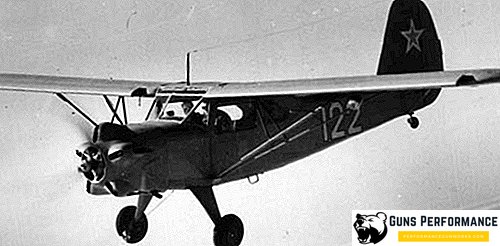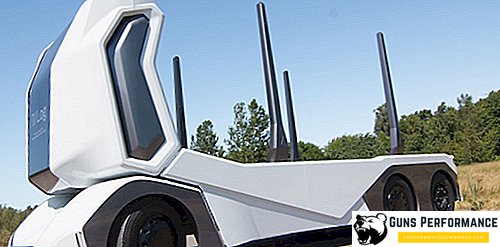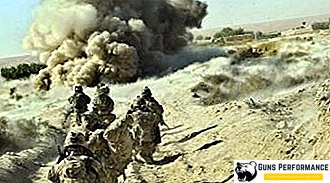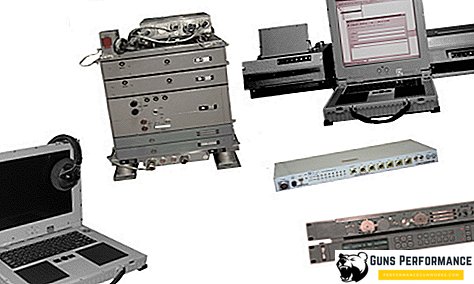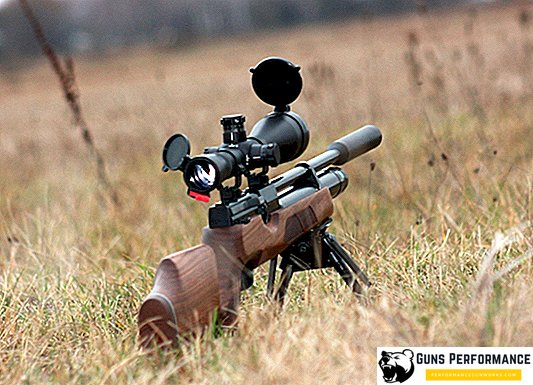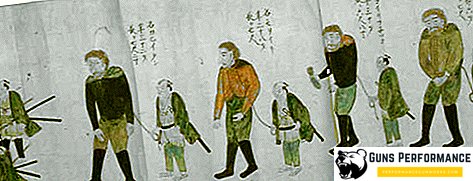
Many venerable designers of aviation technology began their creative way with the creation of light aircraft. It was a good way to try your hand, gain experience, express yourself. The creation of such machines does not require the solution of complex technical problems; light aircraft do not have outstanding flight performance; their design is simple and straightforward. In the future, these "winged firstborn" are in the shadow of their more advanced and famous brethren. However, this rule has its exceptions.
The Soviet light aircraft Yak-12 was developed immediately after the war, at this time its creator Alexander Sergeevich Yakovlev was already a famous aircraft designer, the creator of a whole pleiad of beautiful fighters. However, all his life he experienced a weakness for light aircraft, his design bureau developed more than ten light aircraft, which were widely known throughout the world. However, according to one of the versions, Stalin himself entrusted Yakovlev to develop the simple and cheap multi-purpose transport aircraft. In this case, the designer could not refuse from the task.
Yak-12 became one of the most famous and massive Soviet light aircraft. This car for many years faithfully served in the domestic civil and military aviation. The development of a new light-engine aircraft began in the Yakovlev design bureau even during the war, the Yak-12 aircraft first flew into the air in October 1947, and in January 1948 its mass production began. Issue Yak-12 lasted until 1968, during which time it was made almost five thousand aircraft. In the USSR, the production of these light-engine machines was established at the aircraft factory number 115, the Yak-12 was manufactured under a Soviet license in China and Poland.

The operation of the machine continues today, although, of course, not as actively as in the 60-70s of the last century. Currently, a large number of Yak-12 are on the balances of flight schools and are used for training flights and parachute jumps.
The Yak-12 is a veteran plane, a hard-working plane, a symbol of a whole era in Soviet light aviation. For several decades, he transported passengers and cargo in the vast expanses of the USSR, saved the wounded, helped to grow bread, taught new pilots. Unpretentious and reliable, he could use almost any runway, and often was the only thread linking remote areas and the center of the country.
During the period of mass production, more than ten modifications of the Yak-12 aircraft were developed.

The history of the creation of the Yak-12
The need to create a new light multi-purpose aircraft, which would replace the proven, but already morally obsolete U-2 (Po-2) and UT-2, became apparent even during the war. After its completion, a clause on the accelerated development of small aircraft was included in the plans for the restoration of the national economy. Light aircraft planned to deliver to local airlines, use them to combat pests, to transport the wounded and mail. Interested in new light aircraft and the military. We needed a new car, simple to manufacture and cheap to operate, but at the same time reliable and possessing good flight performance.
In the OKB-115, which was led by Yakovlev, they began to develop new light-engine aircraft during the war. The work went immediately on two cars: the Yak-13 low-wing low-wing aircraft with a retractable landing gear and the Yak-14 high-wing strut. Both planes were planned to be equipped with M-11FM (M-11M) air-cooled engines.
Both the Yak-13 and Yak-14 had a closed cockpit for the pilot and two or three passengers. In principle, both aircraft had good performance and deserved mass production, but in the conditions of post-war devastation it was impossible. Tests of both aircraft began in 1945. On them, the Yak-13 showed higher flight performance - speed, ceiling, climb rate and flight range - and the Yak-14 was noted as being easier to operate and fly. For this reason, preference was given to the Yak-14.
Soon it was renamed the Yak-10 and put into mass production at the Moscow-based plant No. 464. It would seem that Soviet aircraft received a new light aircraft, and this question was finally closed for several decades ahead. There have even been developed several modifications of the Yak-10 - with dual control, sanitary and basic coherent version. However, this story has continued.

It was decided to modify the design of the Yak-10 and create on its basis a new aircraft.
The development of the Yak-12 aircraft began in accordance with the order of the Minister of Aviation Industry of April 16, 1947. Two prototypes were laid at once, the first of which was ready by October 1947. He took to the air on October 20, 1947.
In general, the Yak-12 was very similar to the Yak-10, but there were some significant changes in its design. The Yak-12 had a somewhat reduced gargrotta behind the passenger cabin, its top was completely glazed. In addition, compared with the Yak-10, the Yak-12 was reduced wing span and its total area. The new aircraft was equipped with a slat, which occupied almost the entire leading edge of the wing. Some changes have undergone the design of the main landing gear. Aeronautical lights and headlights for landing at night were installed on the Yak-12. Despite the above improvements, the take-off weight and the weight of the empty aircraft remained almost unchanged. The first Yak-12 aircraft was equipped with an M-11FR-1 engine with a capacity of 145 liters. with.
On tests, the Yak-12 showed excellent stability and controllability. The aircraft could continue flying even with abandoned controls. The take-off and landing characteristics of the vehicle have significantly improved compared to the Yak-10: the aircraft’s mileage was about 49 meters and the run-up was 74 meters. This was especially important given the fact that the car was designed to work on local airlines and as a military liaison aircraft.
By its basic characteristics, the Yak-12 was significantly superior to the Po-2 and was better than the Yak-10.
State tests of the Yak-12 ended on January 5, 1948, after minor modifications the aircraft was put into operation.
Mass production of the machine began in May 1948. In November of the same year, troop testing of the vehicle began, five Yak-12s were selected for them. In general, the military liked the aircraft, it received positive reviews and was recommended for adoption. However, there were some comments that related to the flight range, cruising speed of the Yak-12 and its payload. It was recommended to install a more powerful engine and automatic slats on the aircraft, to make the wing completely metallic (canvas covering made it very difficult to operate in the open air) and equip the machines with an anti-icing device.

An important step in the development of aircraft design was the installation of a more powerful engine on it. In May 1948, the state tested a new star-shaped engine with nine cylinders M-14, its nominal capacity was 250 liters. with. It was launched into serial production at the plant number 487 in the city of Zaporozhye. Replacing the power plant significantly improved the aircraft performance: maximum speed, ascent time, reduced mileage. Tests of the Yak-12 with the M-14 engine began at the end of 1948 and were successful - the aircraft was recommended for serial production.
In 1956, the technical documentation on the Yak-12 was transferred to Poland for the organization of mass production in this country. It was deployed at the PZL aircraft factory. The Poles were able to quickly establish the production of a new machine, and in just three years (1957-1960) they produced 1191 aircraft of modifications "A" and "M". Moreover, in 1958, they created their own agricultural version of the aircraft - PZL-101 and the name Gawron ("The Crow"). A 500-liter tank for toxic chemicals was installed in the Crow's cab, which led to a change in the center of gravity of the vehicle and a decrease in its stability. To counteract this negative effect, Polish engineers gave a small sweep to the wing of the aircraft and installed washers on its ends. Thanks to such improvements, PZL-101 is easily distinguished from other modifications of the Yak-12.

In 1960, the Yak-12B biplane was created on the basis of the Yak-12. The aim of the designer was to significantly improve the take-off and landing characteristics of the machine and make it as suitable as possible for non-aerodrome-based. The task was achieved: in comparison with the base model, the aircraft became more manageable, it could take off and land on very limited size platforms. However, in the mass production of the Yak-12B so launched and was not.
Modifications Yak-12

During serial production and operation of the Yak-12 has been repeatedly upgraded, the plane was constantly trying to adapt to perform more and more new tasks. Below are the main modifications of the Yak-12, which were developed in different years:
- Yak-12. The basic modification of the machine, which is most similar to the prototype. It was mass-produced immediately after the machine was put into operation, about 300 Yak-12 aircraft were produced (according to other data, 700), most of which were sent to military aircraft.
- Yak-12S. Sanitary modification of the aircraft, designed to carry one patient on a stretcher and a health worker. Tests of the Yak-12S were conducted in May-June 1949. The aircraft had a cabin equipped with ventilation and heating systems, as well as changes were made to the exhaust system of the machine: its connections were taken out of the cabin, which completely prevented the exhaust gases from entering the medical compartment. The structure of the aircraft equipment included a first-aid kit, a medical table and a thermos.
- Yak-12SH. Version of the machine, developed in 1948 for agricultural work. Under the fuselage of the machine was a chemical tank. The Yak-12SH could also be used for sowing farmland from the air.
- Yak-12R. Communication aircraft for the air force and civil air fleet. The creation of this modification of the machine is associated with the development of a more powerful engine M-14 (AI-14R). The Yak-12R was developed in 1950, this modification was distinguished by a new hood for a star-shaped engine, a B-530 propeller with speed control, an increased tail area, a new chassis design and an increased volume of fuel and oil tanks. In the tail of the car was installed brake hook - opener, which was produced to reduce the run when landing on a dirt airfield. However, the main difference between the new modification of the machine was the all-metal wing of a larger area and a slightly modified form. The volume of modifications made to the design of the car was so great that the Yak-12R can be called not a modification of the Yak-12, but a completely new aircraft. The Yak-12R was superior to the base model in all characteristics, the car was predicted for a bright future, but then the “human factor” interfered with its fate. Stalin, having heard about the excellent flight characteristics of the Yak-12R, ordered using it to deliver mail and fresh newspapers to his dacha, sitting right on the front lawn. However, its size was so small that the pilot did not dare to go to the landing and turned the car. This caused extreme irritation of the Leader. Issue Yak-12R was discontinued, production resumed only after the death of Stalin. Total produced more than 2 thousand aircraft.
- Yak-12M. The version of the aircraft, developed on the basis of the modification of the Yak-12R, its creation began in 1953. Produced in a coherent, passenger, sanitary and agricultural version. The car had an elongated tail, new plumage and forkil. Yak-12M - one of the most massive modifications of the aircraft.
- Yak-12GR. The seaplane, created on the basis of the base model. On the plane was installed engine M-11FR.
- Yak-12MM. Float version modification of the Yak-12M. From the Yak-12GR differed large floats and the presence of water rudders on two floats (Yak-12GR had only one steering wheel). The Yak-12MM was most often used as an ambulance plane, and it was equipped with a special boom for loading and unloading a stretcher with a wounded man.
- Yak-12A. Modification of the machine with a slightly different shape of the wing, automatic slats and trapezoidal horizontal tail. These improvements have led to the improvement of the aerodynamic qualities of the car and increased its speed. Yak-12A received a more comfortable passenger cabin with a sofa and decorative upholstery. The modification was developed by order of the Civil Air Fleet, after the creation of the aircraft was usually used as a convenient air taxi, although some of the cars went to the military.
- Yak-12MS. Rescue modification of the aircraft, developed on the basis of the Yak-12M. A radio direction finder was installed on it with a rotating antenna at the bottom of the machine. The direction finder allowed to find people or ships in distress. In addition, a niche for the parachute container was made in the lower gargrote of the aircraft.
- Yak-12UT. Training aircraft modification designed to train military pilots. Factory tests of the Yak-12UT began in 1950, the second set of aircraft control equipment was installed in the cockpit. The plane successfully passed the test phase, but it was never launched into mass production.
This is an incomplete list of aircraft modifications. You should also add that, in addition to the factory models, there are a large number of modifications developed by "folk craftsmen." Some of them are made in one or two copies, which does not prevent them from successfully flying and performing a variety of functions.

Description of the design of the Yak-12
The Yak-12 is a high-profile strut of a mixed design with one engine and a non-retractable landing gear. The tail of the aircraft - strut-bracing.
The first modifications of the aircraft had a twin-winged liner, slit-type flaps and fixed slats. The wing consisted of two console parts that were attached to the fuselage. The struts were V-shaped and fastened to the chassis installation unit.

The frame of the fuselage consists of steel pipes connected by welding. The hull of the nose of the car - duralumin, the tail of the fuselage sheathed in canvas. Cabin car type.
The Yak-12 has a non-retractable three-axle pyramidal chassis with a rear wheel and rubber damping. The tail wheel is fixed on the strut.
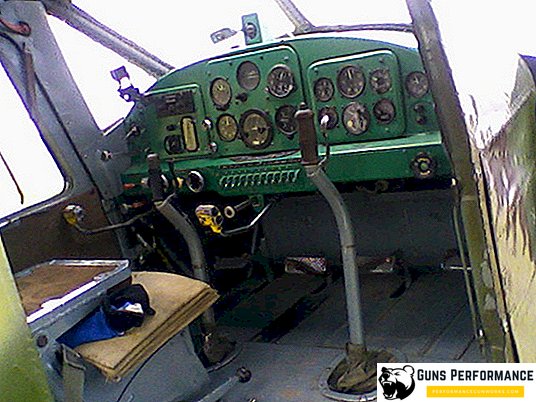
The first modifications of the aircraft were equipped with an air-cooled M-11FR engine. Starting with the modification of the Yak-12R, a more powerful M-14 engine (AI-14FR) was installed on the aircraft. The engine was mounted on the engine frame, on top of it was covered with a metal hood. In front of the hood were radial metal louvers, adjusting them, the pilot could control the engine cooling. The oil radiator was located under the hood.
Characteristics TTK Yak-12
| Modification | Yak-12 |
| Wingspan, m | 12 |
| Aircraft length, m | 8,36 |
| Airplane height, m | 3,76 |
| Wing area, square m | 21,6 |
| Weight, kg | |
| empty aircraft | 830 |
| maximum takeoff | 1185 |
| Engine | M-11FR |
| Thrust, kN | 160 |
| Max. speed, km / h | 194 |
| Cruising speed, km / h | 169 |
| Practical range, km | 810 |
| Flight duration, h | 4 |
| Practical ceiling, m | 3000 |
| Crew | 1 |
